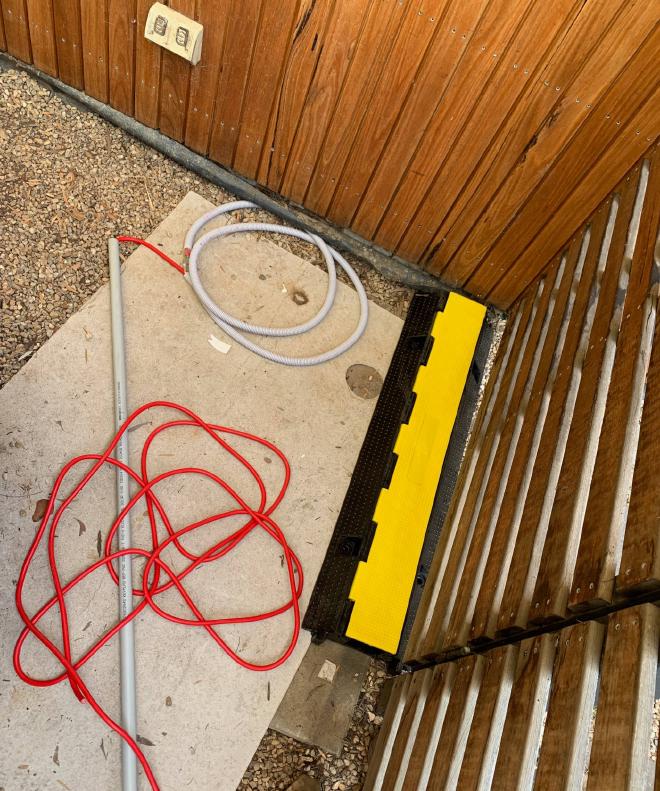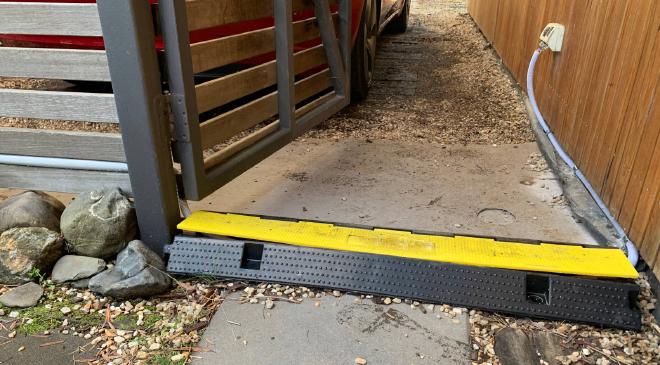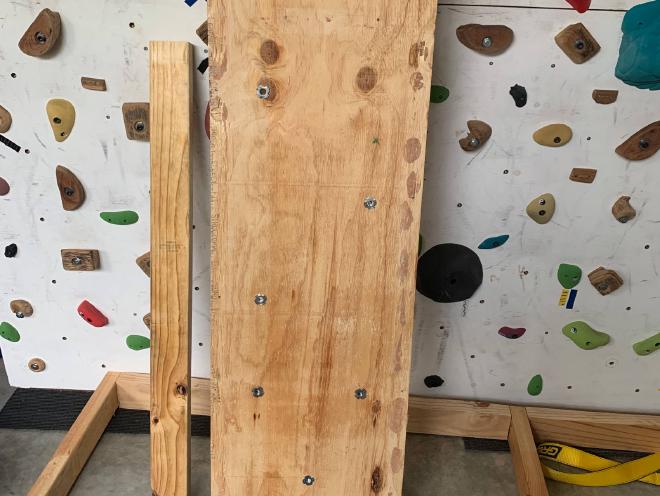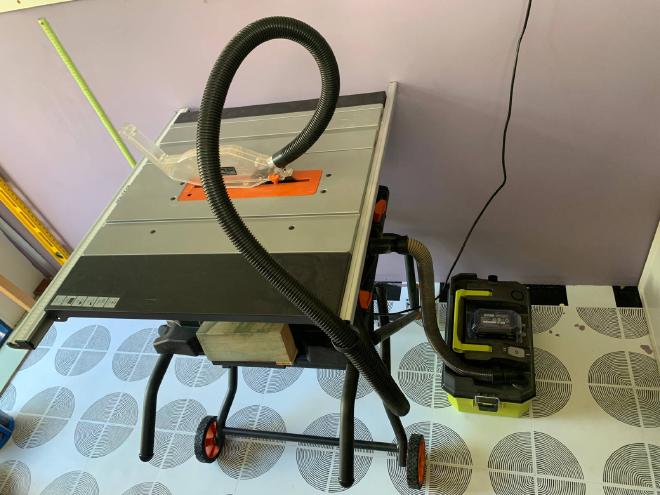Furnishing

Table of Contents
Quiet Shed - This article is part of a series.
Wiring #
The workshop needed electricity for power tools, lights, etc. I did not want to involve an electrician, after my last experience: having Pea Hut wired up by an electrician cost me over $7000. I did briefly consider running most things on batteries (eg a light and fan via an inverter). But it would have been annoying to drag out an extension cord every time I needed a corded power tool.
So I decided to run a permanent extension cord from an existing outdoor power outlet. I bought a 15m “extra heavy duty” extension cord for $50, and ran it through some electrical conduit I had lying around. To do this I had to cut the cord, thread it through the conduit and through the workshop wall, then attach a rewirable socket to the cut end.
The cable could be run along a fence all the way to the workshop, except for a gate. At the gate I ran it through a speed hump cable protector - another $50.


Tools #
I managed to stuff in all my stuff.

Workshop populated with tools
There is a second-hand desk at the far end, and a table I knocked together to take a vice and drill press stand. I made several shelves out of scrap plywood. Hanging space is provided by 19mm plywood panels that I reclaimed from a climbing wall.
Because climbing walls have a grid of T-nuts, I can screw bolts into them to hang things from.

The centrepiece of the space is an Evolution RAGE-5S table saw. $500, which is at the cheap end for a table saw, but far more than I’ve spent on any tool before. I love it.
Because it’s on a wheeled frame I have the option to take it out onto the deck to cut long pieces.
I have a Ryobi project vacuum that can connect to the dust extraction port. It picks up maybe half the dust.


Drill bits and driver bits by the door. And hammers, obviously.
To minimise rusting, a small (23 Watt) thermoelectric dehumidifier runs continuously.
